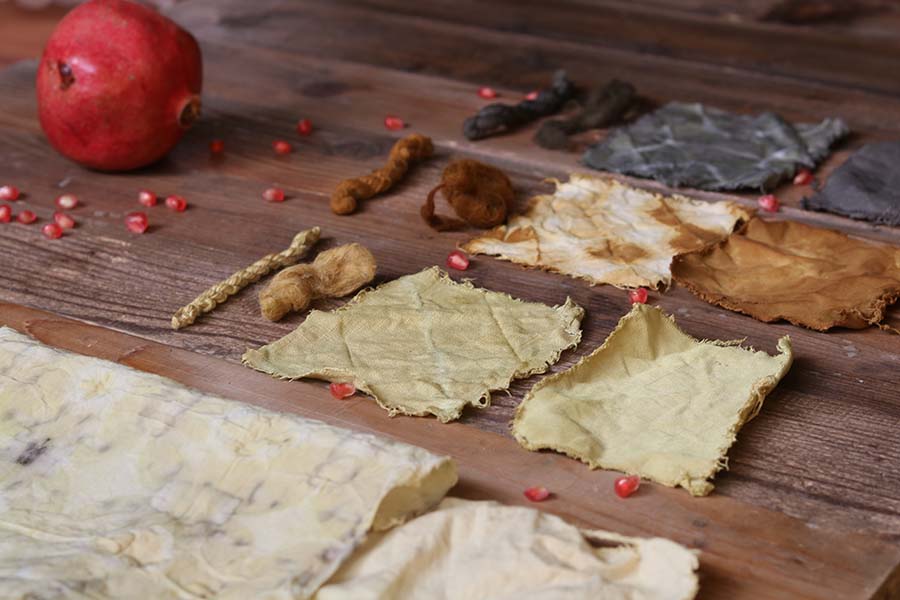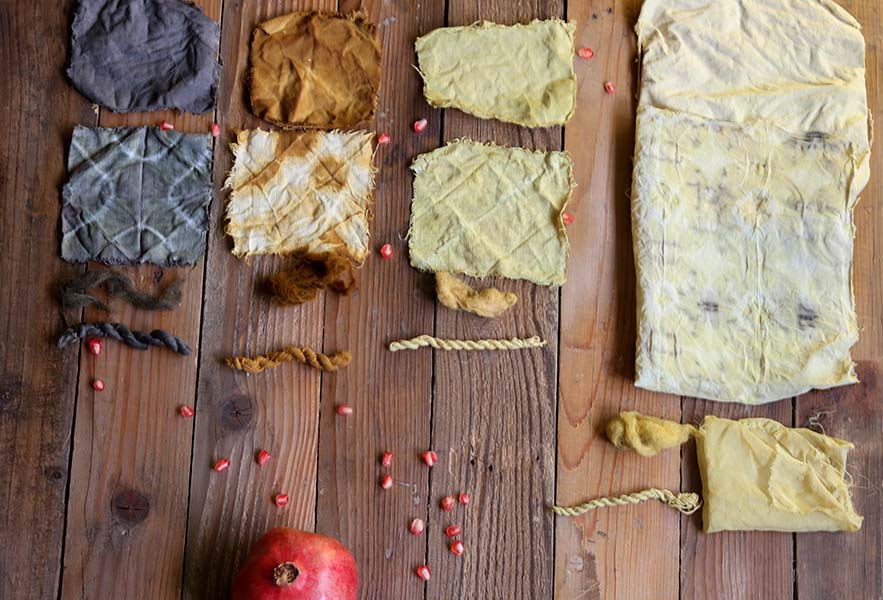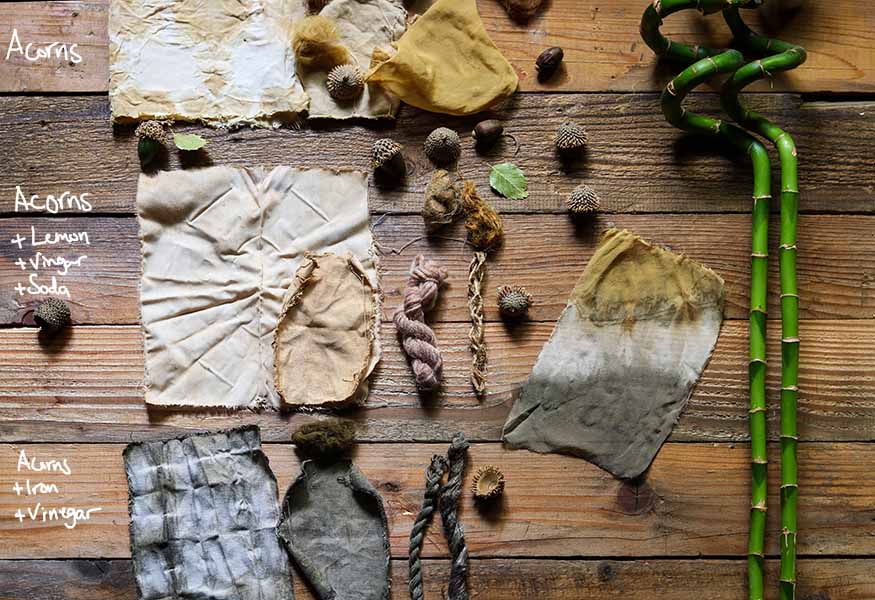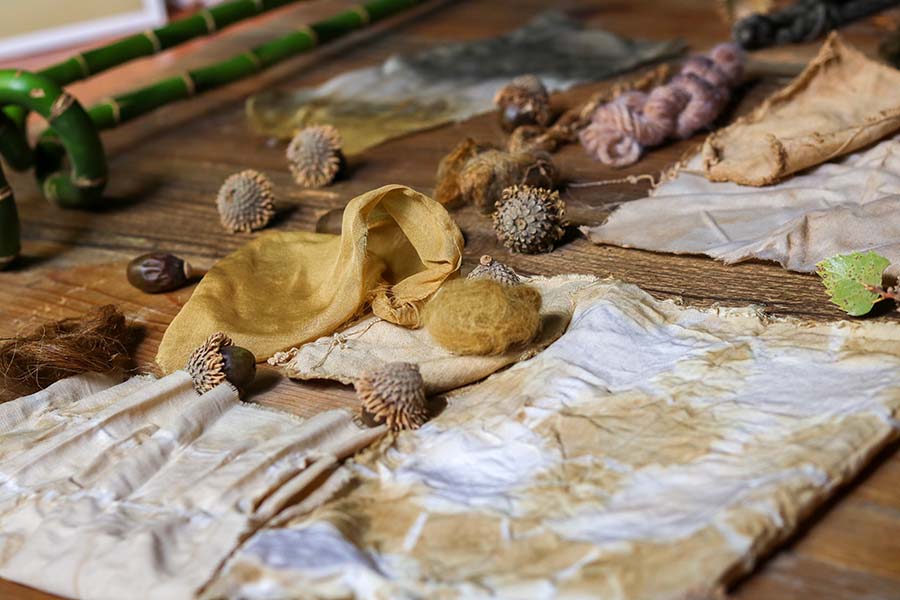4. BioChromes¶
This week was all about producing dyes, inks, and pigments from natural resources.
The idea was to replace the synthetic dyes and look for alternatives. We worked as a team and then individually.
Research and Inspiration¶
Even though the natural and bacterial dyeing is still a relatively newly discovered body of knowledge, and withholds plenty of potentials to be revealed, there are many experts making significant contributions to the field. Among them, Karin Fleck from Vienna Textile Lab and KUKKA Studio founded by Laura Luchtman.
Here are some images of bacterial dyeing on fabric done by KUKKA that I really liked.

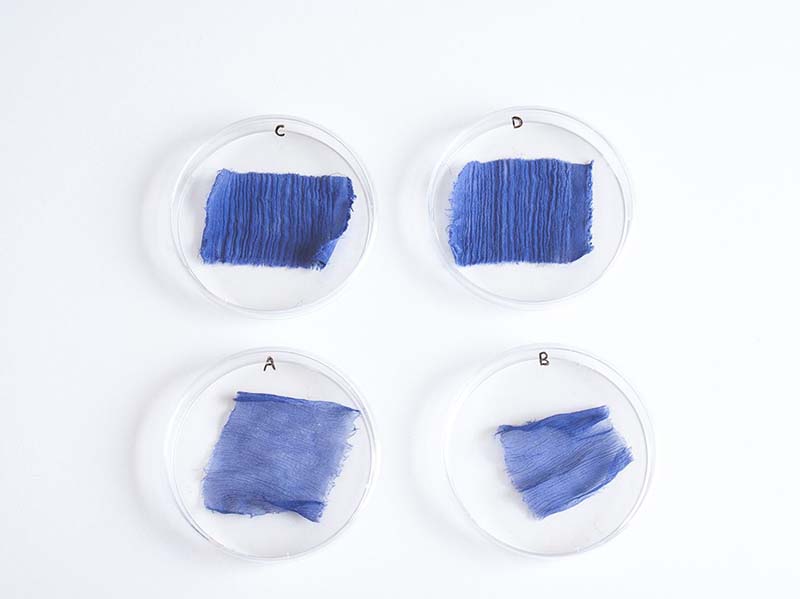

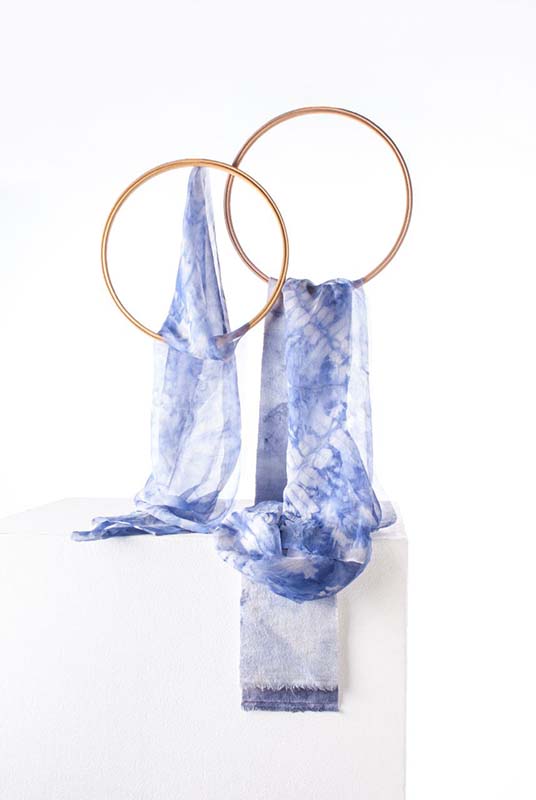
You can read Karin's interveiw with Lampoon here.
Laura gave several inspirational talks about Living Colour, biodesign and sustaibility at Neonyt Berlin, Avantex Paris, TEDxRotterdam, BlueCity, VentureCafé, Colour Materialized Symposium, Natural Dyeing Symposium and Rotterdam University of Applied Sciences. Check it out below
Overview¶
First things first, we need materials to extract the dye from, fibers to dye, and modifiers.
About the fibers¶
The more natural the better, the more dye they will absorb. There are two types of fibers:
- Plant Fibers.
- Animal Fibers.

Plant Fibers¶
Such as cotton, linen, and kenaf.
Plant fibers are less sensitive to sudden tempreture changes and can be put in a boiling water.
Animal Fibers¶
Such as wool, goat hair, sheep hair, silk,...
They are senstive to sudden tempreture changes hence, it's advised to scour, rinse, mordant, and dye in lukewarm water and avoid sudden tempreture drops.
Dye¶
Getting our fibers ready¶
Cut the linen, cotton, and silk-chiffon into smaller pieces. Make skeins and shibori.
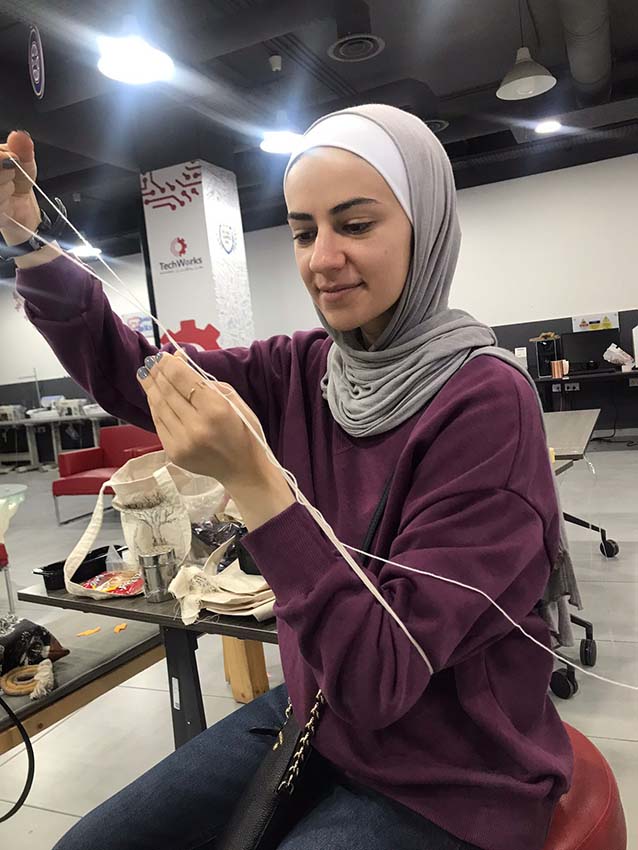
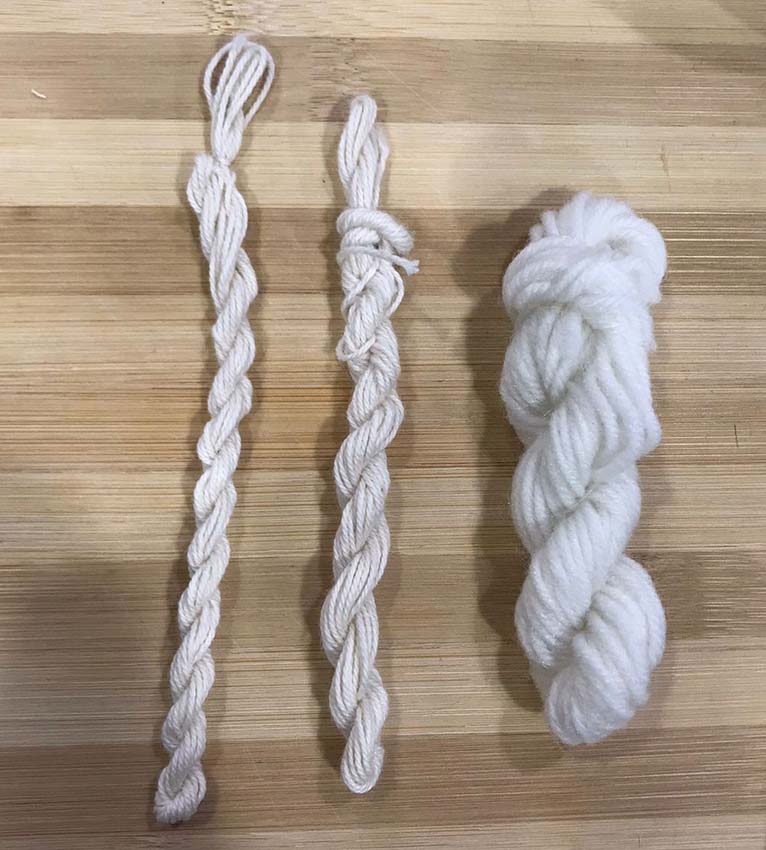
Scouring¶
For the fibers to absorb the most amount of dye possible it needs to be clean, and that's where scouring comes in, scouring is the process of cleaning the fibers of the oils and dirts on them, the ones we can see and other we can't see. In other words sterilizing the fibers.
Before scouring we need to measure the weight of the fibers (W.o.F) while they're dry. it's important to write the W.o.F down and keep it for future reference. Since plant and animal fibers are treated differently, we measured the W.o.F for each of them separatly.
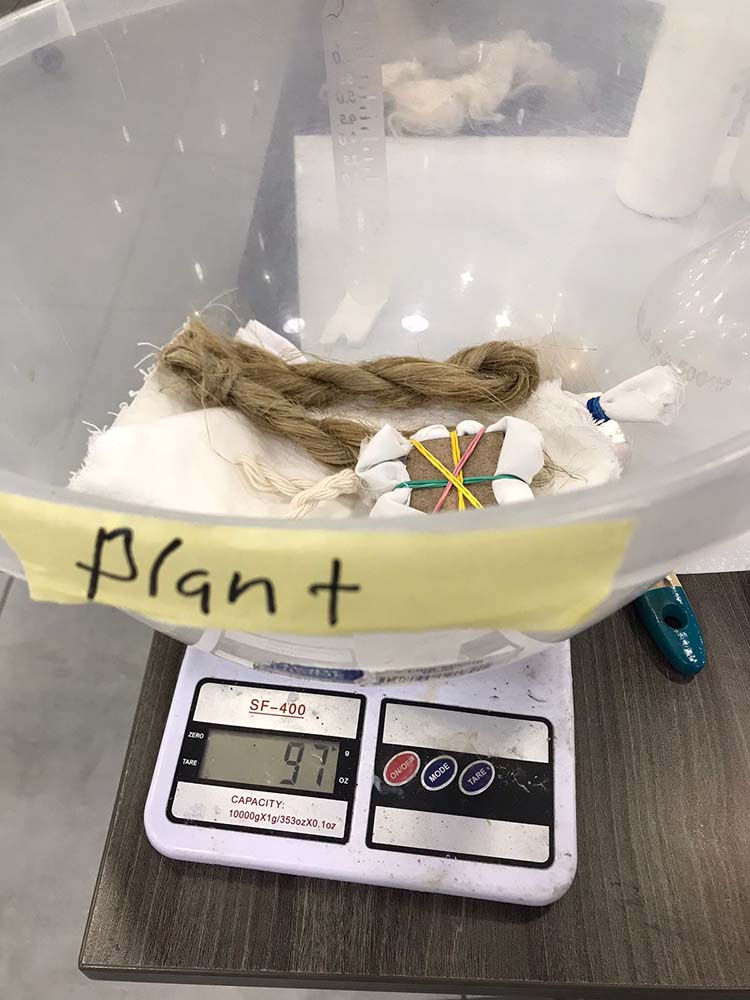

We used two pots; one for the animal fibers and another for the plants fibers, we added soda to the water (approx. 1 tablespoon to every liter of water).
We kept the water tempreture at around 70° C for the animal fibers and we we let the plants fibers water boil, then we added the fibers into the designated pots. and let them for an hour or so, stirring every once in a while.
After an hour (or longer) we take out the fibers, rinse them and dump the dirty water.
Washing the fibers
- Remember to wash the animal fibers with lukewarm water to avoid sudden change in temperature.

Mordanting¶
Now that we have our fibers clean and ready we need to help them open up to absrob more color, and that's why we mordant the fibers before dying them.
We add 10%-15% of mordant (we used Alum) of the total weight of the fibers that we measured earlier.
In separate pots with the hot water we add the Alum and the fibers again and we leave for an hour or so, then we take the fibers out and our fibers are ready to be dyed!
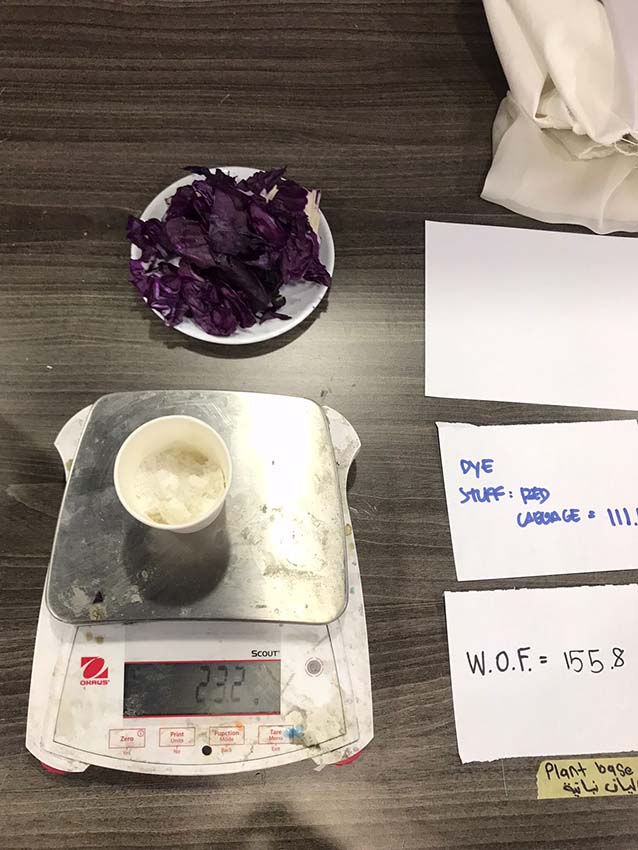
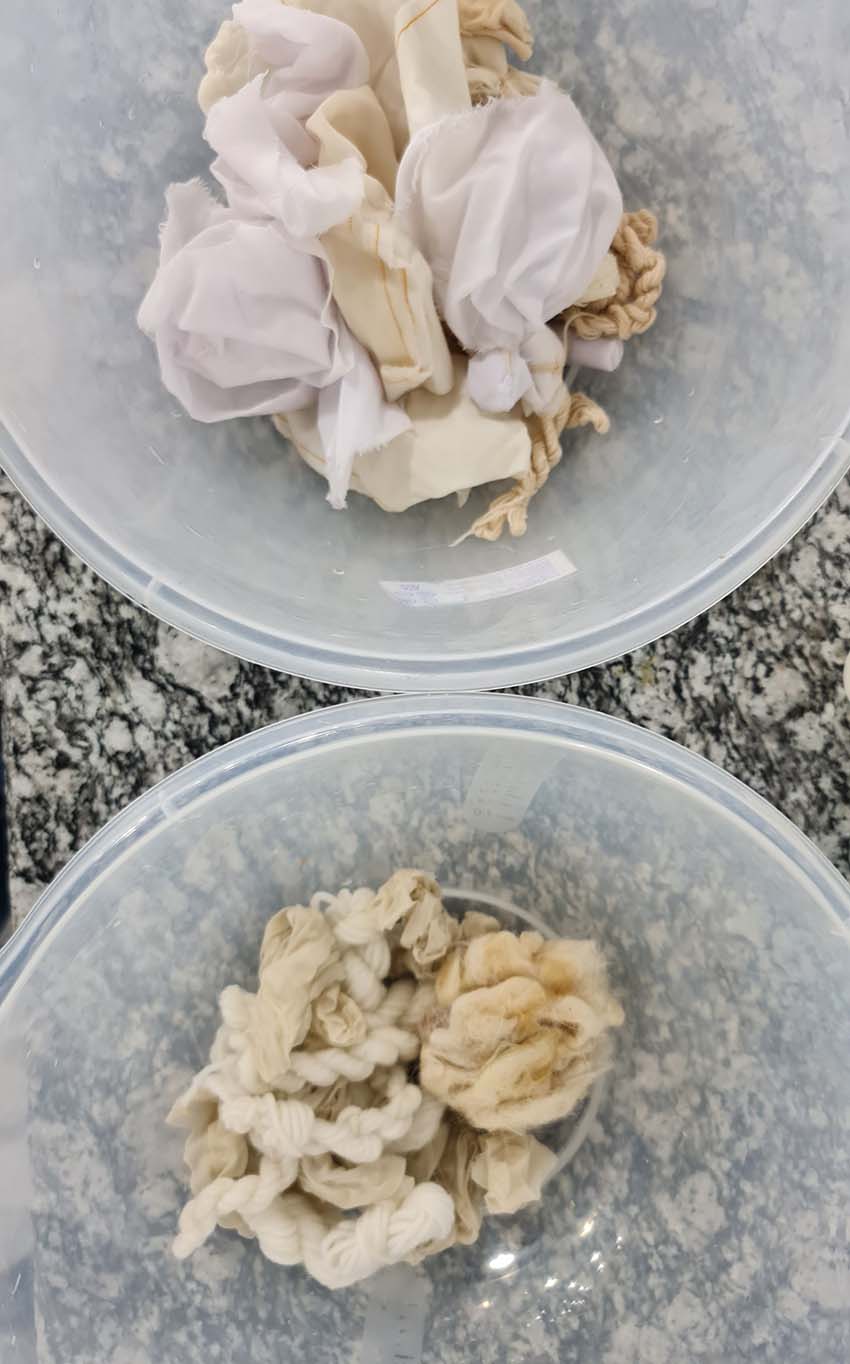
Dye Stuff¶
Nature is rich with elements we can extract colors from, below a sample of the local materials that could be used for this week's assignment.
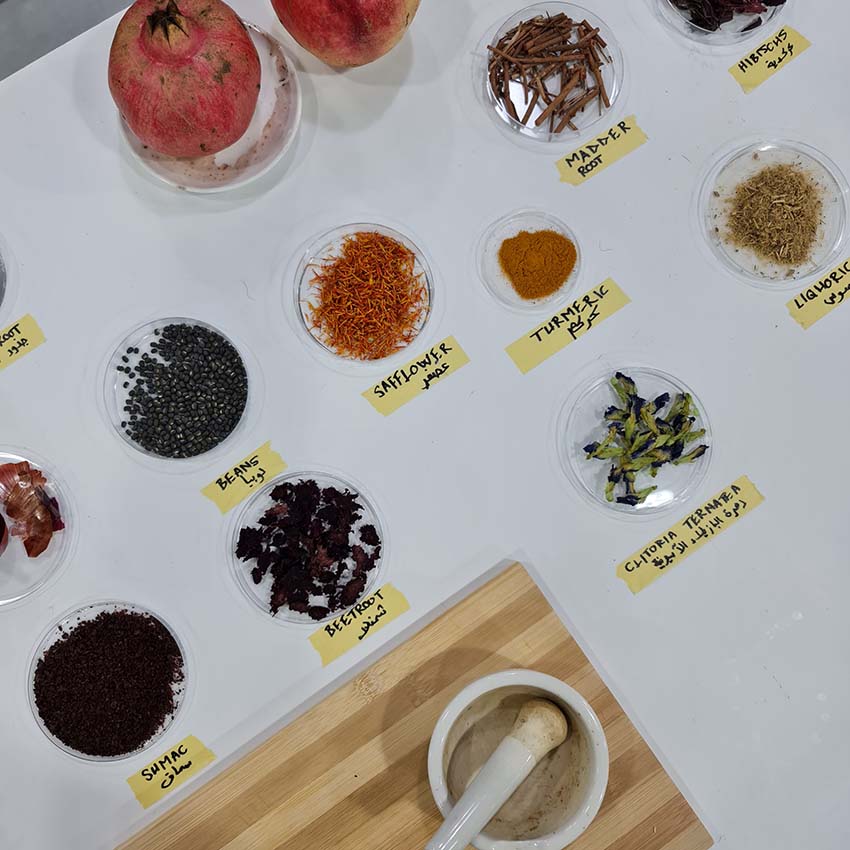
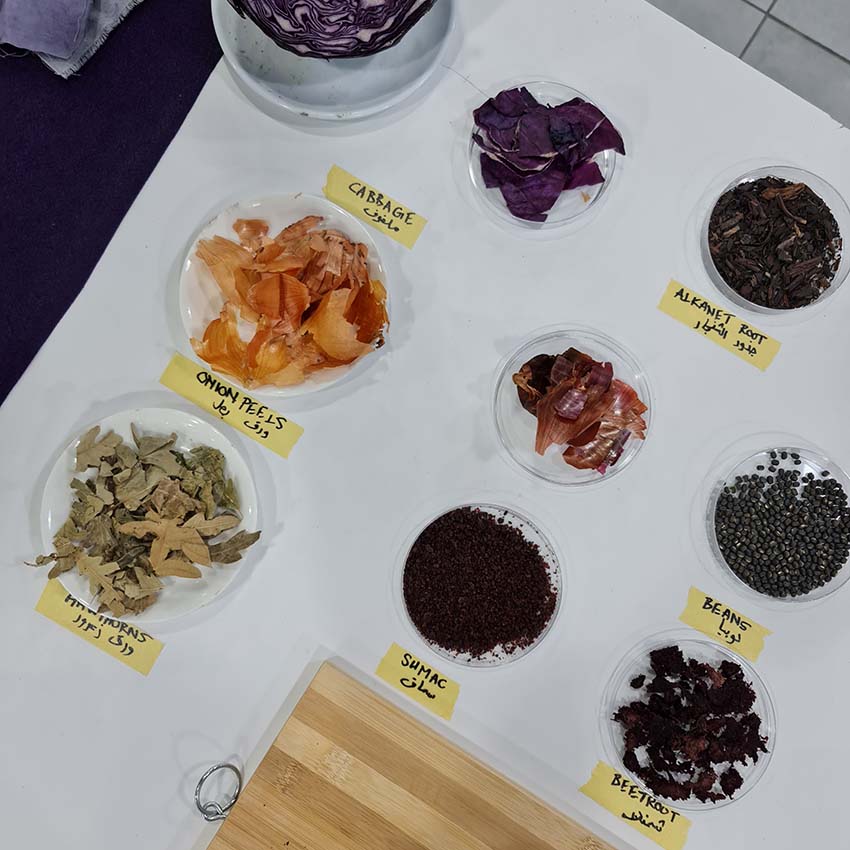
We worked together on the red cabbage and onion peels and indivually I worked on pomegranate, acrons, and red onion peels. I will mention the process for each briefly but I will go in depth with the ones I did indivually.
Red Cabbage¶
Chopp the cabbage into smaller pieces and dip into hot water, add a pinch os salt (salt acts as a stabilizer)

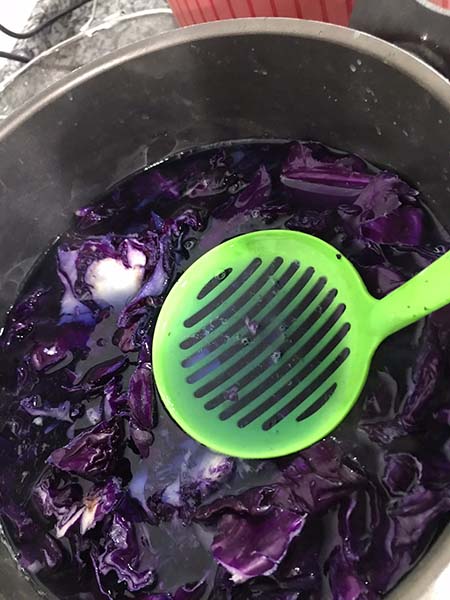
Onion Peels and Red Onion Peels¶
Eventhough they produce different colors, the process of making dye baths for the onion and the red onion is pretty much the same: - Peel the onions (we need a good amount) - Dip the peels in hot water, then add a pinch of salt.

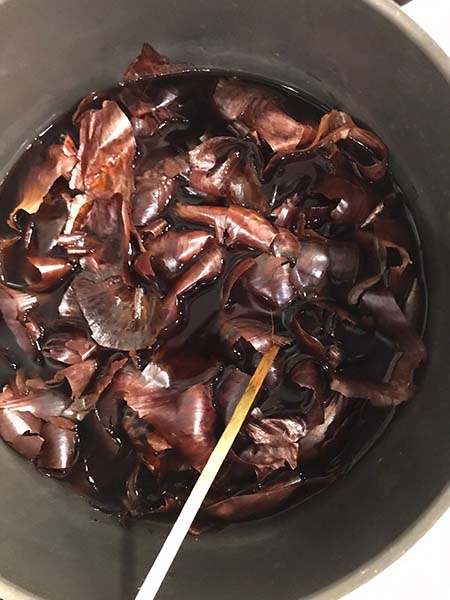
Pomegranate¶
Pomegranate rinds are rich with tannin (19 to 26%), which makes it particularly good for dying fibers escpicially plants fibers. The workflow is the following:
- Cut the pomegranate rinds into small pieces (1/2" each)
- Loose the seeds and the white peels on the inside.
- Dip the rinds in hot water, then add a pinch of salt.
- Leave overnight for better results.

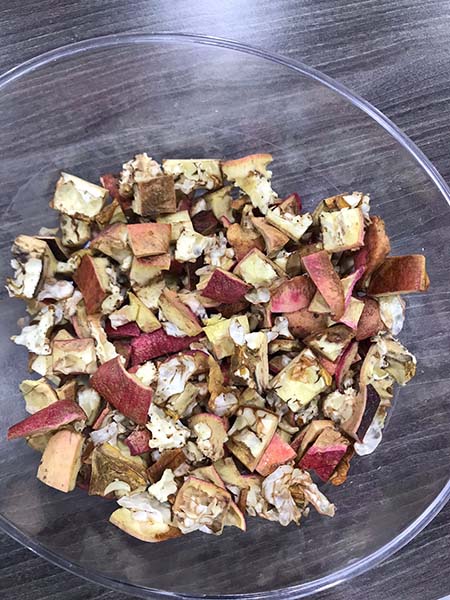
Acorns¶
We went on a trip (a mini hike if you will :P) in the hunt for acrons. and we got lucky!
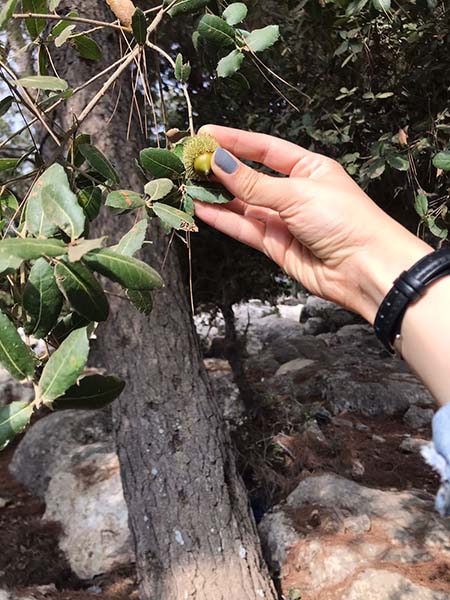

When we got back to the lab we realized that there are different shapes and colors of acorns so I categorized them according to shape and color as follows:
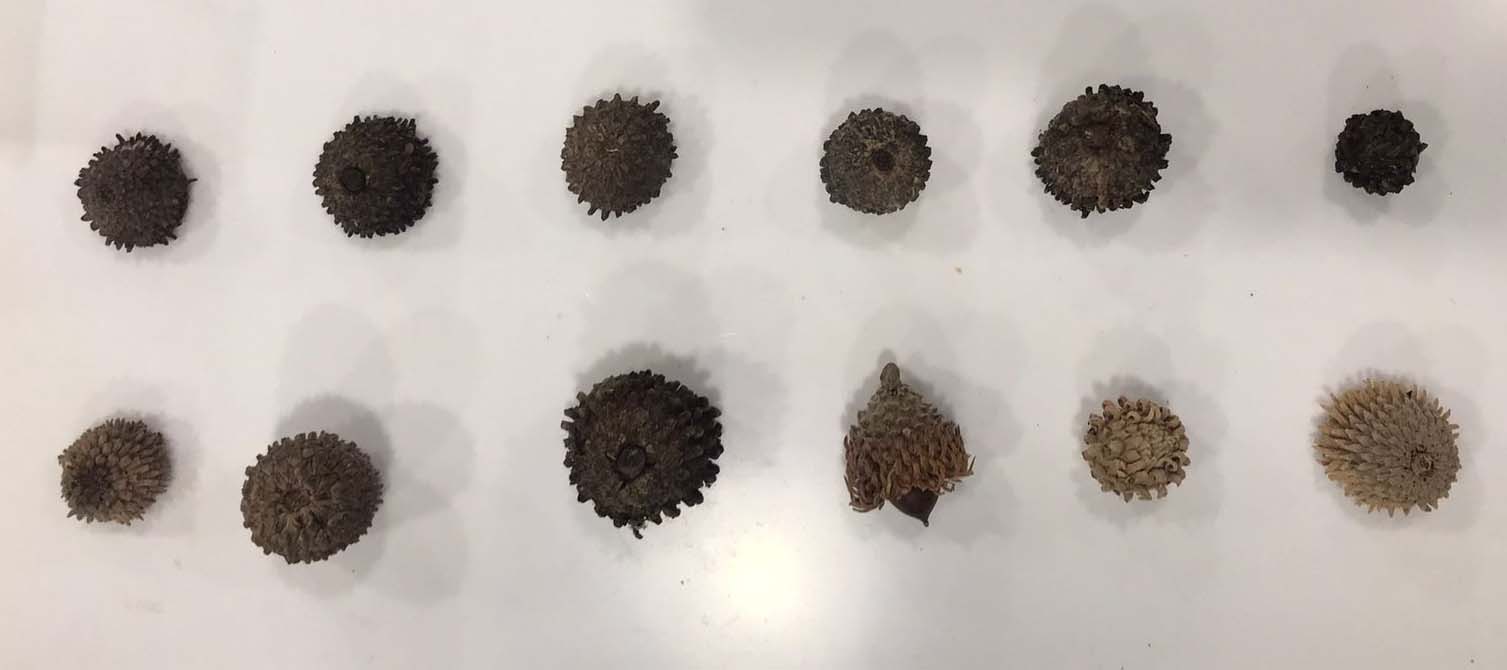
I wanted to see if different colors and shapes of acorns give different results, but unfortunately I only had the time to make one though, maybe I'll experiment with the other one later...
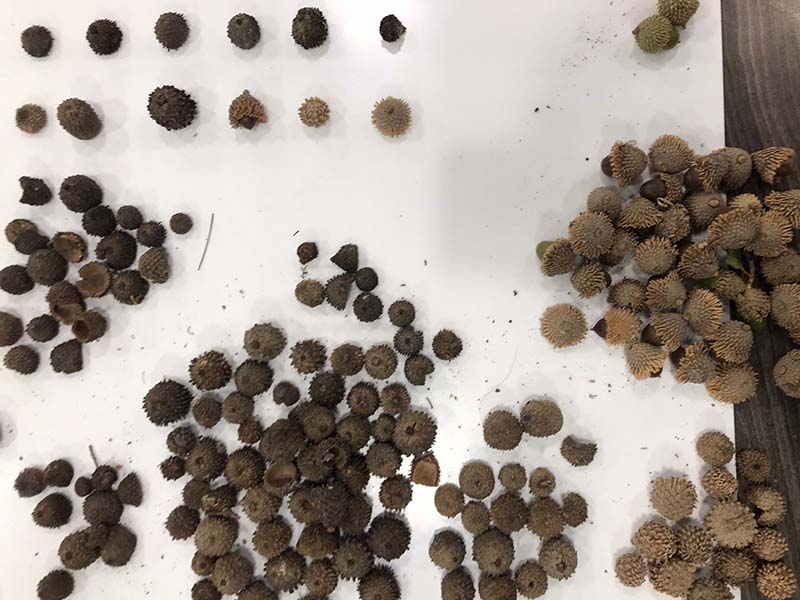
Making the dye bath is similar to the rest of the dye baths, the only extra thing I did prior was to wash and clean the acorns.
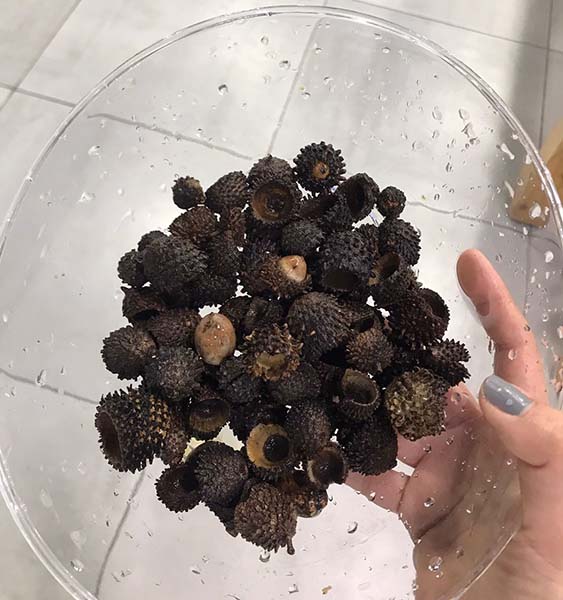
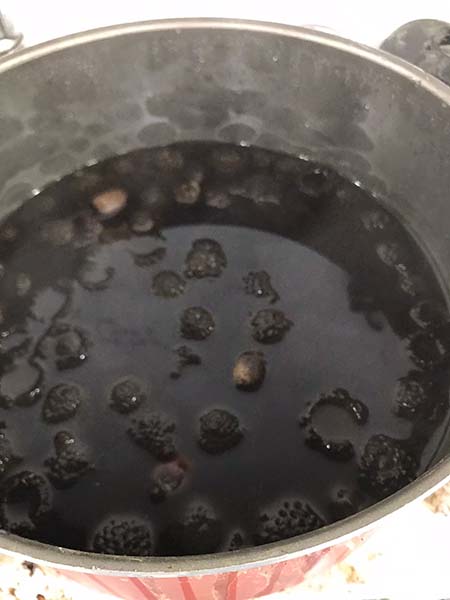
Strain¶
After letting the dye bath set for some time ( the longer you leave the dye stuff in the bath, the richer the color will be). Some dye stuff I left for two hours, other I let overnight.
What we need to do next is to strain the dye bath, separating the dye stuff and the dye bath.

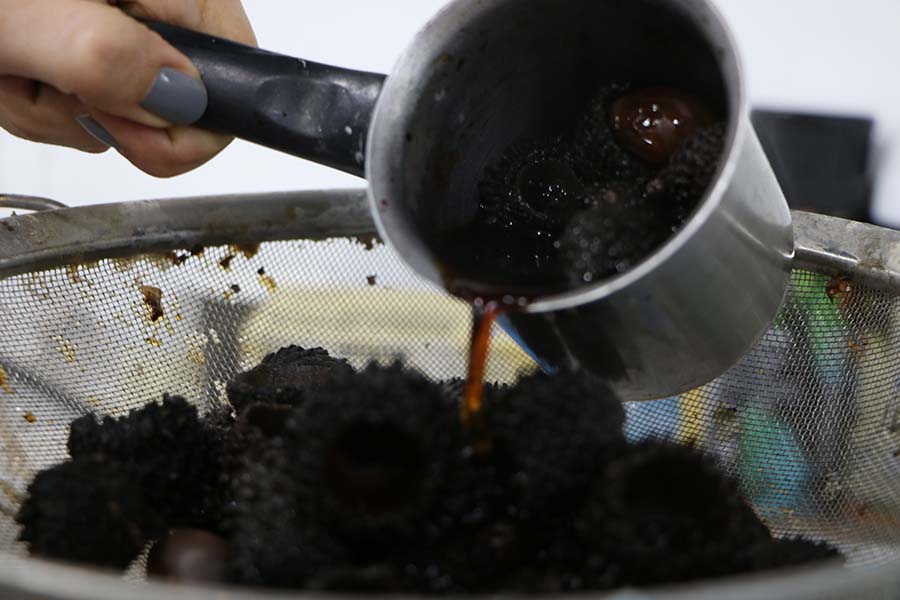
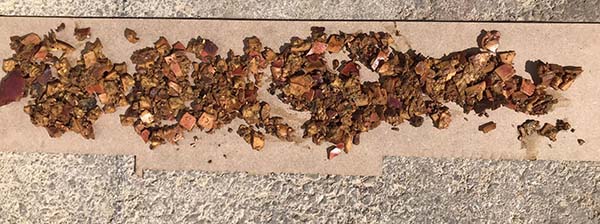
Bathe baby bathe¶
The fun part! drop the fibers, shiboris, skeins, and hairs into the dye baths.
Pro Tip
- For the dye bath to work, it needs to be heated (not necessarily boiling but on low heat) it helps the fibers open up and absorb the colors.
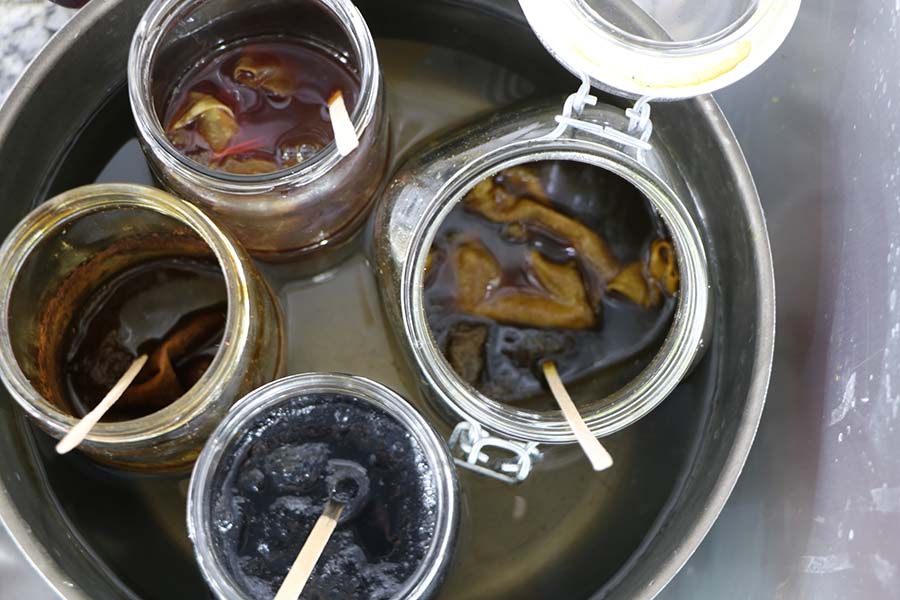
Take out, let dry¶
Take the fibers out of the dye bath, rinse with lukewarm water and let dry.
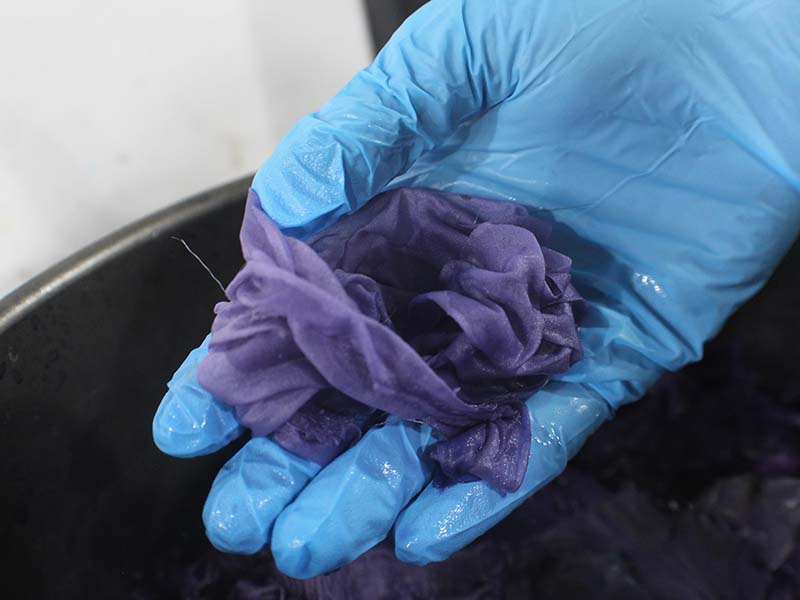
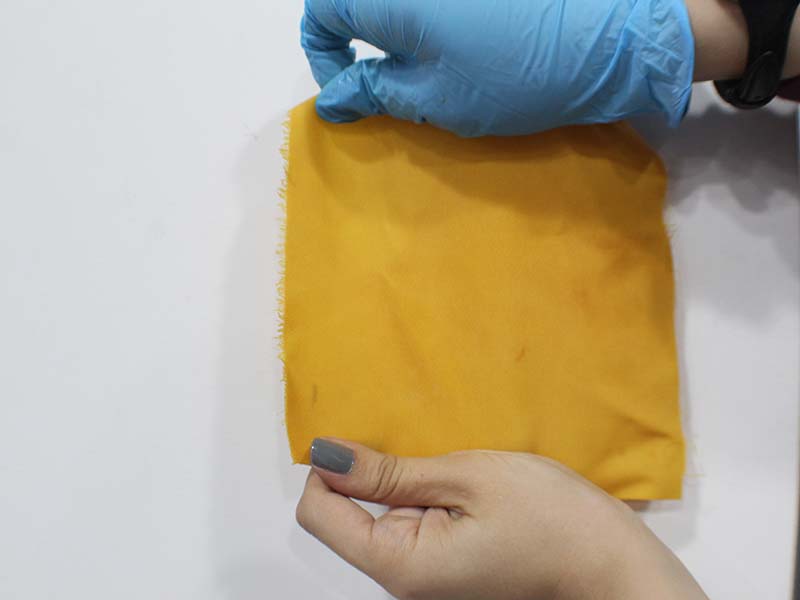
You can also modify the dye bath and add more fabrics to get different effects. And I definitely advice you to play around with shibori art. You can also divide the dye bath into several small containers and modify each one differently and add fibers to each simultaneously similar to this picture shown earlier.

Here are some nice results we got from red cabbage and onion peels.


I share more pictures in the results section
Ink¶
Every color can produce many different colors depending on how you modify it. We used vinegar, lemon, alum, soda, iron + vinegar, and copper as modifiers for the dye baths.
These are the results of modifying the cabbage and the onion peels we did as a group.
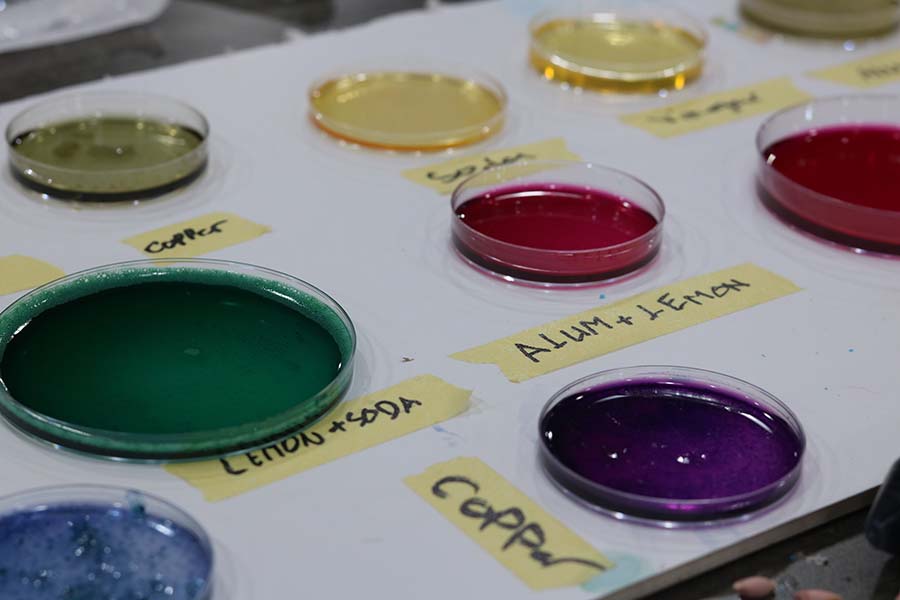
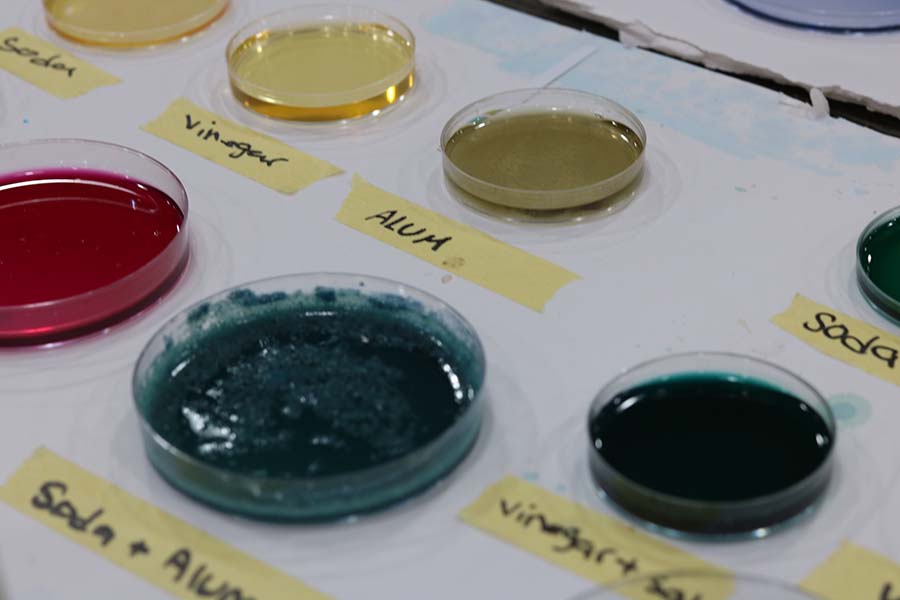
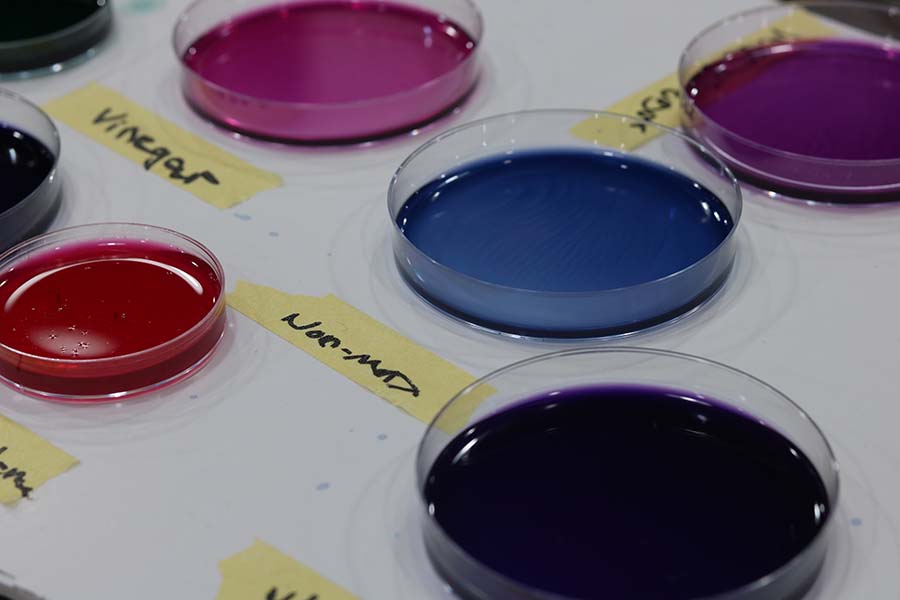
And below are the results of modifying the pomegranate, red onion peels, and acorns
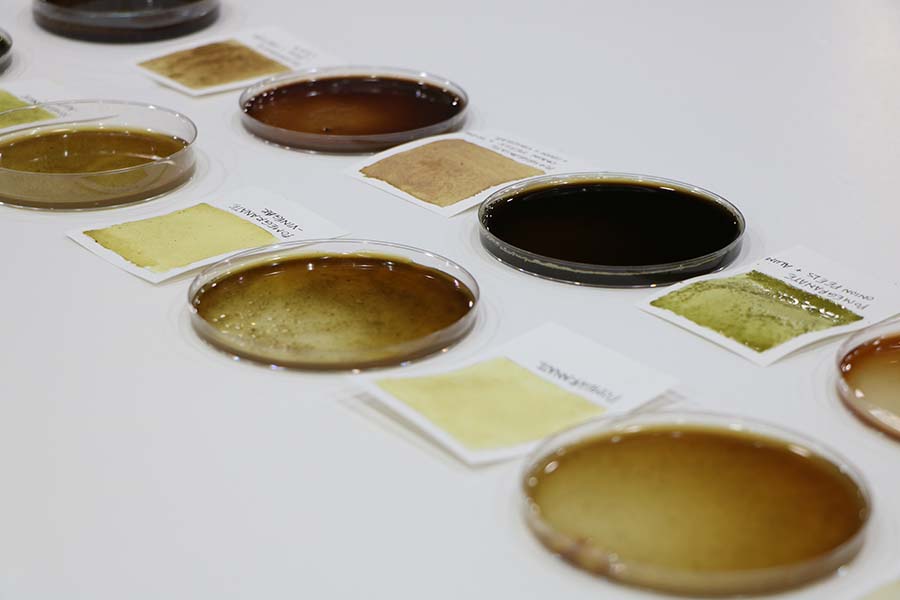
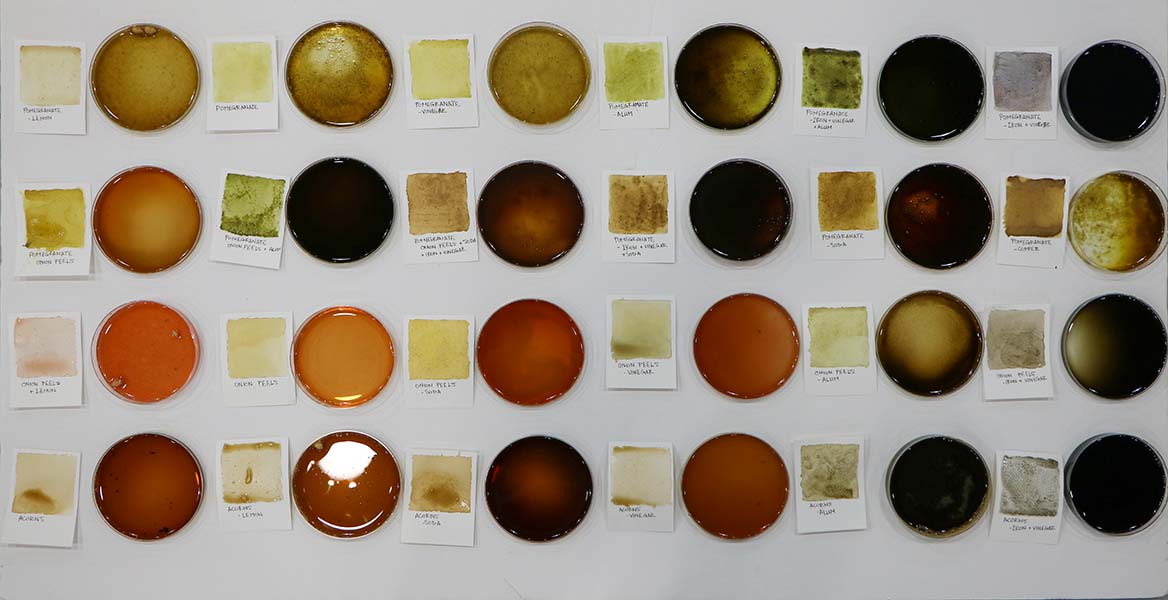
To produce inks we took the dye stuff and added water or ethanol to them and waited for a few moments.
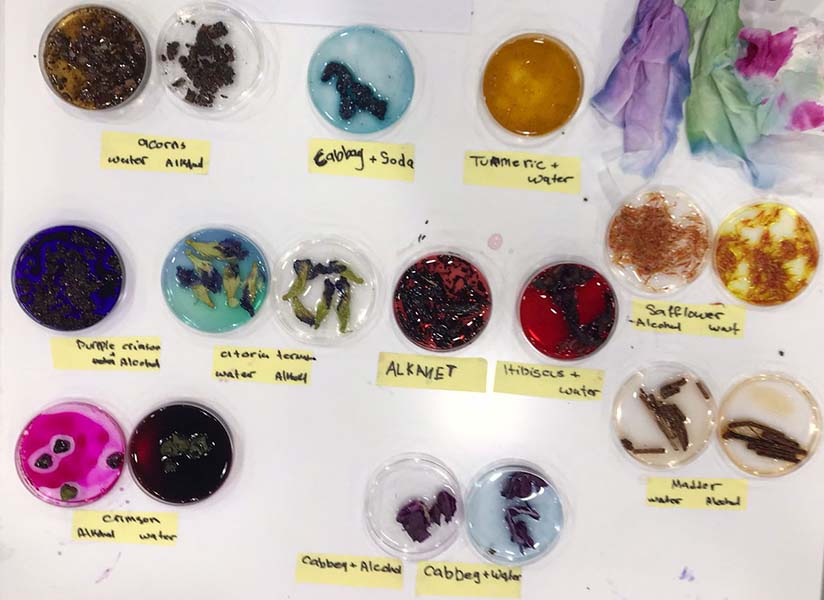
Pigment¶
Materials¶
To produce pigments we need to add alum and soda in a 2:1 ratio. As a general rule of thumb, for every 1000ml of dye bath, we add 15gr of Alum and 7.5gr of Soda.
Process¶
First we need to dissolve the alum with lukewarm water (ratio 1:1) and the soda with lukewarm water (also ratio 1:1), we dissolve each separetly. Then, we add the alum to the dye bath and then we add the soda bit by bit and we stir. We want a ph of 7 and we should modify the soda and alum amounts till we reach a ph of 7. \
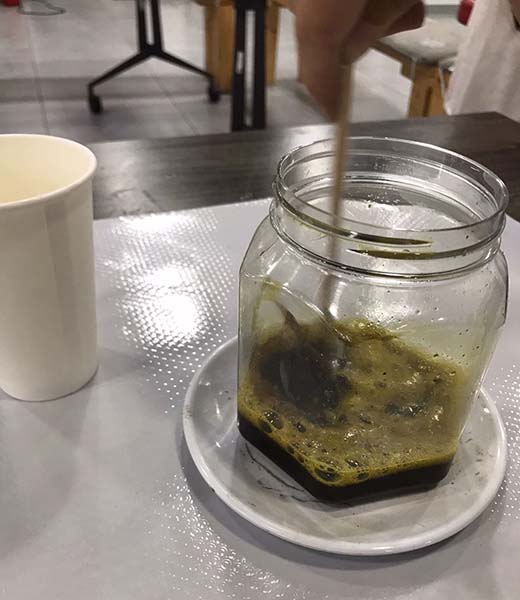
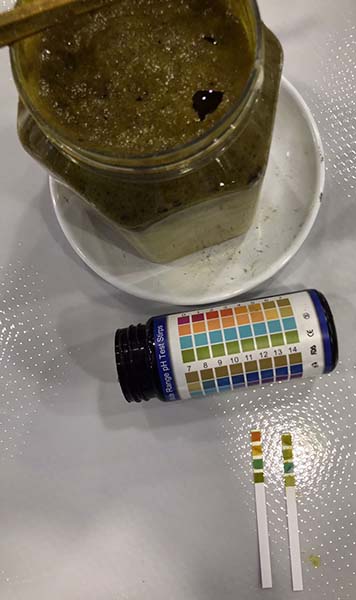
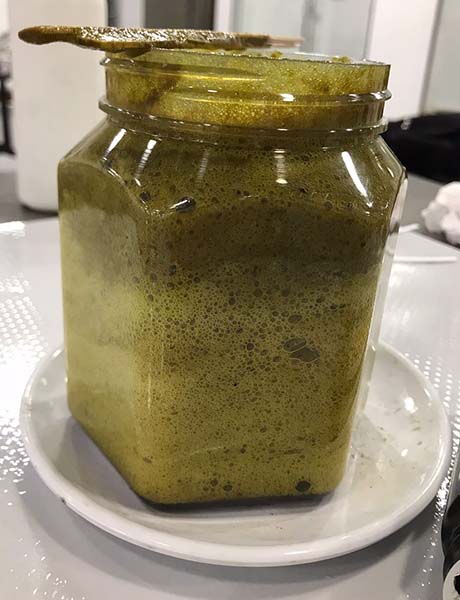
Results¶


